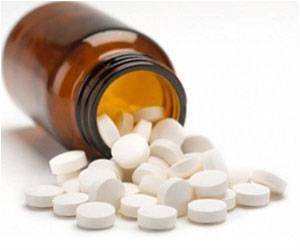Antibiotic Resistance Kills 5 Million People Every Year

Microbes develop resistance to antimicrobials over time, and some eventually evolve into “superbugs” that no longer respond to the treatments. As a result, we are seeing an increase in the number of untreatable infections in hospitals and communities. This condition, known as antimicrobial resistance (AMR), implies that ordinary infections and disorders may once again become life-threatening.
According to recent data, antibiotic resistance is responsible for about 5 million fatalities each year, which is greater than the total combined mortality toll of HIV/AIDS and malaria (1). It is also predicted that drug-resistance-related mortality will exceed 10 million per year by 2050, surpassing cancer as the main cause of death worldwide.
Celebrated between November 18-24, the goal of World AMR Awareness Week is to raise awareness and knowledge of this silent killer (2). Antimicrobial resistance requires immediate global action. However, existing initiatives that focus on solutions established in high-income settings may not be appropriate for low- and middle-income countries’ societal and economic issues.
We are part of The British Academy’s multidisciplinary Global Convening Program, which was established to investigate fair and inclusive solutions to this problem. Our joint knowledge spans epidemiology, ethics, and human rights. If we want individuals to become less reliant on antibiotics, we must first address the causes that lead to antibiotic resistance in the first place.
Global Burden of Antimicrobial Resistance
Antimicrobial resistance is a worldwide problem, however, there are some regional variations. The majority of antimicrobial resistance-related human deaths occur in Sub-Saharan Africa (3). In these regions, drug resistance is a developing concern in malaria and tuberculosis.
Advertisement
Low-income areas are frequently associated with the use of low-cost antimicrobials that may be of poor quality or even faked. These settings are optimal for resistance to arise. Many are available without a prescription for self-diagnosed conditions.
Antibiotics Use or Abuse?
Antibiotics are the most often used antimicrobials. Antibiotic use grew by 65% worldwide between 2000 and 2015 (4). However, antibiotics are used in animals and agriculture more than in human health (5). 73% of all antimicrobials are utilized in food-producing animals. The United Nations unanimously adopted a resolution in September 2016 recognizing the inappropriate use of antimicrobials in animals as a key cause of rising antimicrobial resistance.
Why Antibiotics Are a Bigger Problem in Farming
Farmers rely on antibiotics to avoid disease outbreaks and increase productivity, particularly in areas where animals are housed in unsanitary and overcrowded circumstances and farmers lack access to veterinary care. Antibiotics are used as “quick fixes” in certain situations (7).
A woman informed researchers in one study in rural Uganda that she was using leftover antibiotics to treat family members and her hens. This antibiotic repurposing is viewed as a means of survival and earning a living.
Antibiotic Resistance Could be the Reason for the Next Pandemic
Antimicrobial resistance in agricultural animals, experts warn, might lead to the next pandemic. Everybody is vulnerable, everywhere.
Antimicrobial residue contamination spreads to soils, rivers, streams, and oceans, as well as food and drinking water, and contributes to resistance. Even if they do not use these medications, everyone is exposed to antimicrobials, particularly antibiotics. This type of contamination is exacerbated when antimicrobials are used and discarded carelessly. The global reaction must be equitable to all.
New Antimicrobial Resistance Strategy for Prioritizing Fairness and Sustainability
Policy alternatives must be carefully studied with all parties concerned, as well as by including public and community views, without pre-determined solutions in mind. “Simple” remedies may disadvantage communities bearing the greatest burden of infections and inadequate treatment. For example, prohibiting the selling of antibiotics over the counter may assist in reducing excessive use, but it may also deny life-saving medication to patients who have no other options. Similarly, without antibiotics, small-scale pig and poultry farmers may be unable to survive. The solution we are working on is equitable and inclusive. It honors people and their customs while also benefitting human health, animal welfare, and the natural environment.
References:
- About Antimicrobial Resistance
https://www.cdc.gov/drugresistance/about.html#:~:text=About%20Antimicrobial%20Resistance,-Print&text=Antimicrobial%20resistance%20is%20an%20urgent,resistant%20infections%20occur%20each%20year. - Antimicrobial Awareness Week 2021 – Spread Awareness, Stop Resistance
Wu D, Walsh TR, Wu Y. World Antimicrobial Awareness Week 2021 – Spread Awareness, Stop Resistance. China CDC Wkly. 2021 Nov 19;3(47):987-993. doi: 10.46234/ccdcw2021.241. PMID: 34888113; PMCID: PMC8633552. - Antimicrobial Resistance Collaborators. Global burden of bacterial antimicrobial resistance in 2019: a systematic analysis
Antimicrobial Resistance Collaborators. Global burden of bacterial antimicrobial resistance in 2019: a systematic analysis. Lancet. 2022 Feb 12;399(10325):629-655. doi: 10.1016/S0140-6736(21)02724-0. Epub 2022 Jan 19. Erratum in: Lancet. 2022 Oct 1;400(10358):1102. PMID: 35065702; PMCID: PMC8841637. - Global increase and geographic convergence in antibiotic consumption between 2000 and 2015
Klein EY, Van Boeckel TP, Martinez EM, Pant S, Gandra S, Levin SA, Goossens H, Laxminarayan R. Global increase and geographic convergence in antibiotic consumption between 2000 and 2015. Proc Natl Acad Sci U S A. 2018 Apr 10;115(15):E3463-E3470. doi: 10.1073/pnas.1717295115. Epub 2018 Mar 26. PMID: 29581252; PMCID: PMC5899442. - Antibiotic Use in Agriculture and Its Consequential Resistance in Environmental Sources: Potential Public Health Implications
Manyi-Loh C, Mamphweli S, Meyer E, Okoh A. Antibiotic Use in Agriculture and Its Consequential Resistance in Environmental Sources: Potential Public Health Implications. Molecules. 2018 Mar 30;23(4):795. doi: 10.3390/molecules23040795. PMID: 29601469; PMCID: PMC6017557. - Antibiotics in agriculture and the risk to human health: how worried should we be?
Chang Q, Wang W, Regev-Yochay G, Lipsitch M, Hanage WP. Antibiotics in agriculture and the risk to human health: how worried should we be? Evol Appl. 2015 Mar;8(3):240-7. doi: 10.1111/eva.12185. Epub 2014 Aug 2. PMID: 25861382; PMCID: PMC4380918.
Source: Medindia
Source link
#Antibiotic #Resistance #Kills #Million #People #Year



